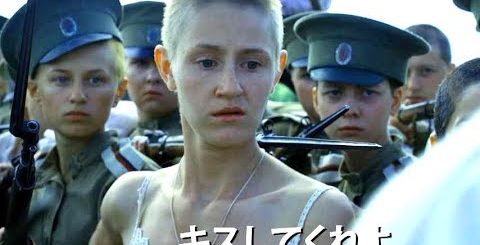アキーラさん散策!アイルランド・ダブリン・オコンネル通り2,Dublin,Ireland
ダブリン北界隈の主軸、オコンネル通りは、1749年にルーク・ガーディナーが、この周辺の土地を所有していたヘンリー・ムーア(ドロエダ伯爵)から買い取り、大がかりな開発が始められた。
最初は高級住宅街スクエアの建築が進められていたが、1794年に建築家ジェームス・ガンドンがカーライル橋(現オコンネル橋)を完成させると、それに伴ってメインストリートがケイペル通り(Capel St.)からドロエダ通り(現オコンネル通り)に移行することとなり、道幅の広い通りが作られることとなった。現在の3分の1ほどだった道幅を45mに広げ、当時ヨーロッパでもっとも広い通りとなり、英国の総督の名前からサックビル通りと名付けられた。中央の歩道はドロエダ通り当時のもの。かつては鉄の手すりがあり街路樹やランプが並べられていた。
1762年にルーク・ガーディナーのライバル業者フィッツウイリアム卿が当時未開拓だったリフィー川南界隈の開発を開始し、北界隈より広い土地が安く手に入ることから、貴族や議員が競うように私邸を建て、南界隈が急速に発展、逆にサックビル通りは徐々に衰退していった。さらにアイルランド経済に大打撃をもたらした1800年の合邦法(アクトオブユニオン)により、この通りに住んでいた貴族や政治家はロンドンに引っ越して行かざるを得なかった。ほとんどのタウンハウスは空き家となり、賃貸住宅や多くはホテルに改装された*。
1882年にリフィー川沿いにオコンネルの像が建つと、カーライル橋も広げられ、名前が「オコンネル橋」と変わった。やがてサックビル通りもダブリン子によって「オコンネル通り」と呼ばれるようになり、1924年正式に「オコンネル通り」となった。
1916年のイースター蜂起、そして1922年の内戦でオコンネル通りの建物はほとんどが壊され修復されたが、今日も銃弾の跡を残す建物も少なくない。
今日、オコンネル通りはバスが行き交いホテルやデパート、本屋やファストフード店が立ち並ぶにぎやかな通りとなり、サックビル通りが作られた当時の高級住宅街の優雅な面影はほとんど残されていない。しかし新しく通りの中央に設置された空に向って伸びる「光りのモニュメント/スパイヤ」には21世紀にますます発展するであろうダブリンの勢いが感じられる。
Buy from (Earl Doroeda) Henry Moore Luke Gardiner, who owned the land around here in 1749, the main axis of the neighborhood north of Dublin, O’Connell Street, the major development was started.
While the first had been promoted construction of square upscale residential area, James Gandon the architect and completed bridge Carlisle the (Bridge O’Connell now) in 1794, along with it as Capell Main Street from (Capel St.) It was so that the transition to (now O’Connell Street) Doroeda street, broad street roads are made. Spread on the roads 45m was about one-third of the current, and the widest street in Europe at the time, I was named Sackville street from the name of the Governor-General of the United Kingdom. Sidewalk in the middle of the day as things Doroeda. Trees and street lamps had been ordered once have iron railings.
Started the development of neighborhood Kawaminami Liffey Sir William Fitz rival suppliers of Luke Gardiner was undeveloped at the time in 1762, from the fact that land is wider than the neighborhood north of cheaply-available, a private residence and legislators nobility to compete built, the rapidly developing South neighborhood, Sackville Street went into decline gradually reversed. Resulted in a further blow to the Irish economy in 1800 by Gappo law (Act of Union), nobleman and politician who lived on this street and I was forced to go move to London. Most townhouse is vacant, and many have been converted into a hotel rental housing *.
When the statue of O’Connell Located on the River Liffey in 1882, is spread Carlisle Bridge, was the same as “O’Connell Bridge” is the name. So called “O’Connell Street” by the child as well as Dublin Sackville eventually became “O’Connell Street” officially in 1924.
O’Connell Street building has been repaired, but most are destroyed by the civil war in 1922 and the Easter Uprising of 1916, there are many buildings left behind a trail of bullet today.



